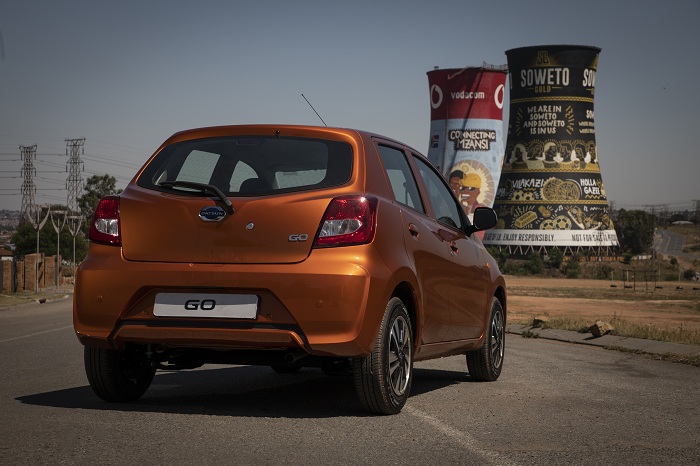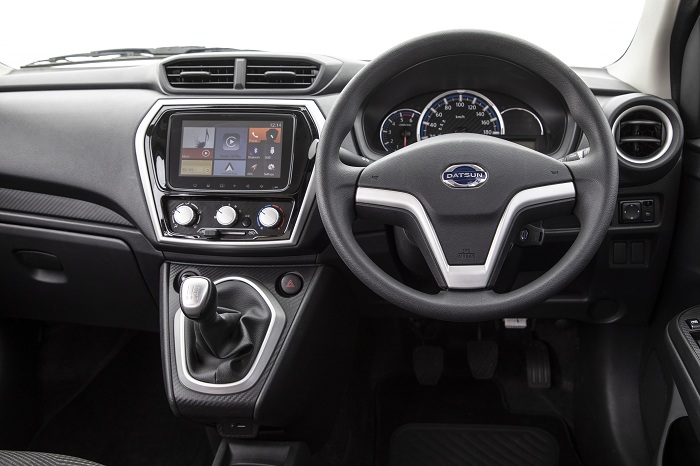In 2018, Datsun released an updated version of the Go, which has, in many ways, addressed some of the issues found with the original.
What’s new?
In the looks department, the Go has always been a cute city car, however, the updated model looks slightly more upmarket, with redesigned front and rear bumpers, a new grille and in the case of my Lux-spec test car, 14-inch alloy wheels and daytime running LED lights.

It is, however, in the interior where the update can be best seen and felt. Gone are the lap belts and the bench seat at the rear and in their place, split folding seats and inertia seatbelts. The old-school push/pull handbrake has also been replaced with a conventional item while on the infotainment front there’s an Apple CarPlay and Android Auto-ready 7.0-inch touchscreen infotainment system which also has AUX and Bluetooth connectivity.
The question of safety

The Go has received a number of safety upgrades which include dual front airbags and ABS. The problem is that the vehicle is still unsafe from a structural perspective. Its previous zero star safety rating won’t be helped much by the addition of a couple of airbags and ABS brakes.
Driving Go
The Go is quite a peppy budget car to drive. Its 1.2-litre three-cylinder engine produces 50kW and 104 N.m of torque, and is connected to a decent five-speed manual gearbox. Its sub-900kg kerb weight makes for respectable acceleration and indeed, low fuel consumption, with my week registering a figure of 6.2 L/100 km. The Go is a good urban commuter and indeed, despite sharing its 180mm of ground clearance with the Kwid, is also respectable on the freeway.
Conclusion
Despite the improvements made to the Go, at R166 300 for the Lux model tested, it’s now simply too expensive for a product that I still feel is sub-standard in terms of safety. I’d rather shop for a demo or used Suzuki Swift, Renault Sandero, Toyota Etios or Volkswagen Polo Vivo. If owning a new car is the goal, consider the Suzuki Celerio.
















